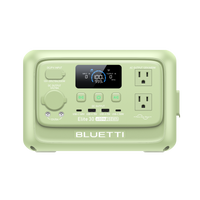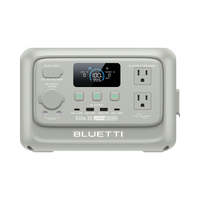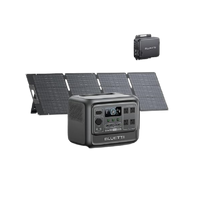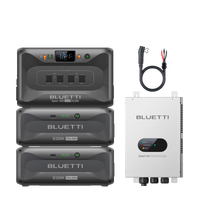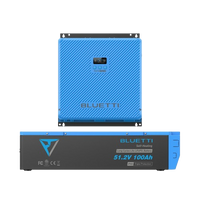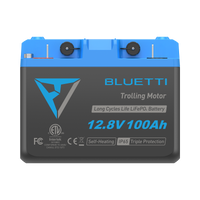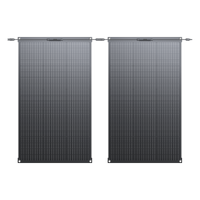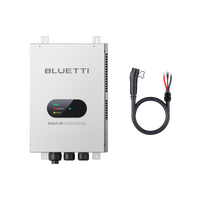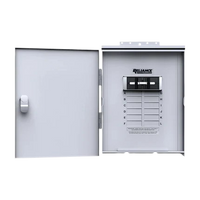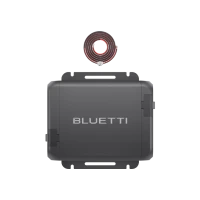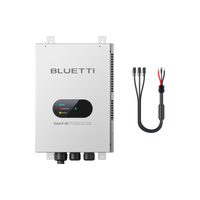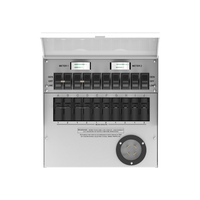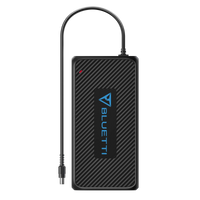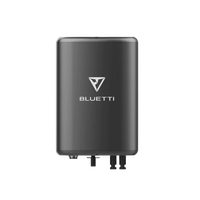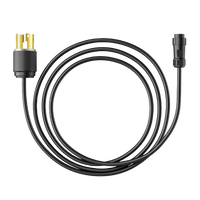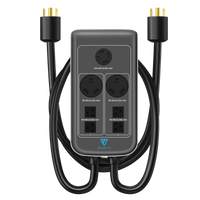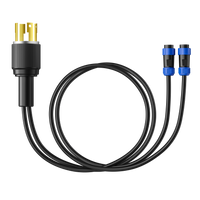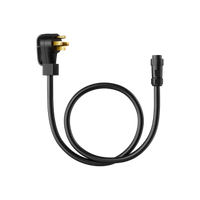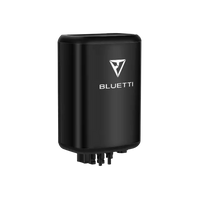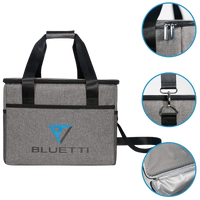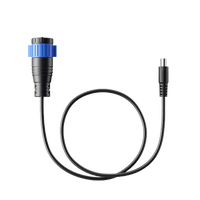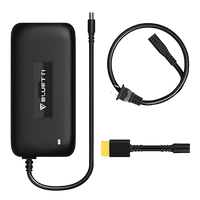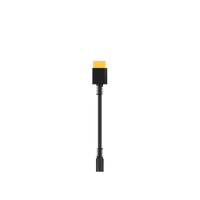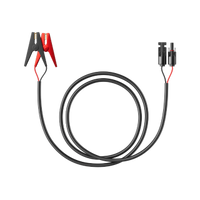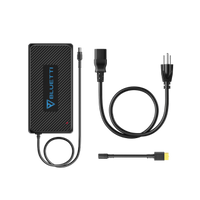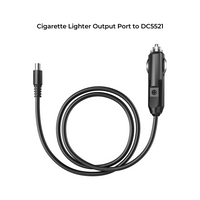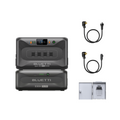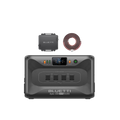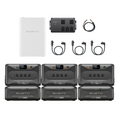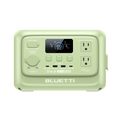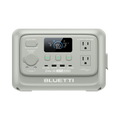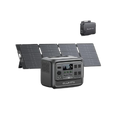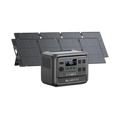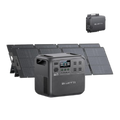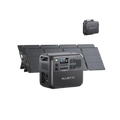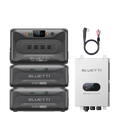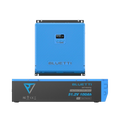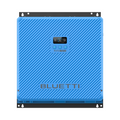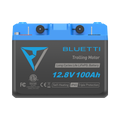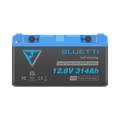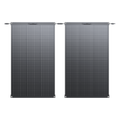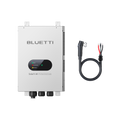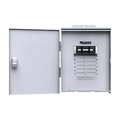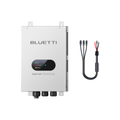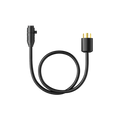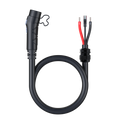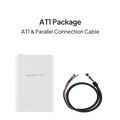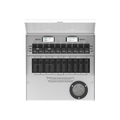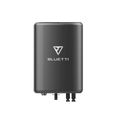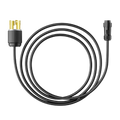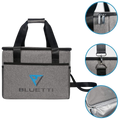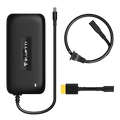S'évader du tumulte du quotidien et partir en pleine nature est toujours une expérience exaltante. Cependant, si vous prévoyez un voyage en camping-car ou en randonnée, une simple batterie externe portable risque de ne pas suffire à alimenter vos appareils et vous-même.
Dans ce cas, un système d'énergie solaire portable est indispensable car il offre la liberté de voyager sans avoir à chercher une source d'énergie pour recharger ses appareils. Qu'il s'agisse d'alimenter vos lampes, votre cuisinière ou vos appareils électroniques, les systèmes d'énergie solaire portables proposent des solutions complètes.
Il est néanmoins essentiel de trouver un système d'énergie solaire adapté à votre style de voyage. En matière de système solaire portable optimal, il n'existe pas de solution unique convenant à toutes les situations. Ce guide vous permettra d'examiner en détail les systèmes d'énergie solaire portables et de choisir celui qui vous convient le mieux afin de garantir votre autonomie énergétique, même dans les endroits les plus reculés.
Que sont les systèmes d'énergie solaire portables ?
Les systèmes solaires portables sont des installations autonomes qui captent la lumière du soleil et la convertissent en énergie électrique utilisable, sous une forme compacte et mobile. Ces systèmes comprennent généralement des panneaux solaires, un régulateur de charge, une batterie et parfois un onduleur.
Les panneaux solaires des systèmes d'énergie solaire portables sont légers et faciles à transporter. Ils sont composés de cellules photovoltaïques qui captent l'énergie solaire et la convertissent en courant continu électrique.
Le régulateur de charge contrôle le flux d'électricité provenant des panneaux solaires vers la batterie. Il garantit une charge efficace de la batterie et la protège contre les dommages et la surcharge.
Dans un système solaire portable, la batterie stocke l'électricité produite par les panneaux solaires. Elle permet d'accumuler l'énergie pendant la journée, lorsque le soleil brille, et de l'utiliser ultérieurement en cas de besoin, par exemple la nuit ou par faible ensoleillement. Les types de batteries couramment utilisés dans ces systèmes sont les batteries lithium-ion, plomb-acide et lithium-fer-phosphate (LiFePO4).
Dans certains cas, les systèmes d'énergie solaire portables peuvent également inclure un onduleur. Ce dernier convertit le courant continu (CC) stocké dans la batterie en courant alternatif (CA), adapté à l'alimentation de divers appareils électroniques.
Pourquoi les systèmes d'énergie solaire portables sont-ils parfaits pour les endroits isolés ?
Les systèmes solaires portables sont bien adaptés aux endroits isolés pour diverses raisons :
1. Indépendance énergétique
Dans les régions isolées, l'accès aux réseaux électriques traditionnels est souvent difficile, ce qui complique l'approvisionnement en électricité. Grâce aux systèmes d'énergie solaire portables, vous produisez votre propre énergie, ce qui vous assure une indépendance énergétique et réduit votre dépendance aux sources extérieures.
2. Installation facile et mobilité
Les systèmes solaires portables sont légers, compacts et faciles à installer. Vous pouvez les mettre en place rapidement une fois arrivé à destination et les ranger une fois votre aventure terminée.
3. Énergie renouvelable abondante
Les régions isolées bénéficient généralement d'un ensoleillement abondant, ce qui rend les systèmes solaires portables très performants. Les panneaux solaires captent l'énergie solaire et la convertissent en électricité, fournissant ainsi une source d'énergie fiable et renouvelable. Grâce à cette abondance de soleil, vous avez la garantie d'un approvisionnement énergétique constant tout au long de votre voyage.
4. Impact environnemental minimal
Les systèmes solaires portables produisent une énergie propre, sans émissions ni pollution. Leur impact environnemental est minimal comparé aux sources d'énergie fossiles. Dans les zones reculées, ces systèmes énergétiques préservent l'environnement et s'inscrivent dans une démarche de développement durable.
5.Polyvalence et adaptabilité
Les systèmes solaires portables peuvent alimenter une large gamme d'appareils, allant des petits appareils électroniques comme les téléphones et les ordinateurs portables aux équipements plus importants, tels que les réfrigérateurs ou les systèmes d'éclairage.
6. Faible entretien
Les systèmes solaires portables nécessitent généralement un entretien minimal. Il suffit de nettoyer régulièrement les panneaux solaires pour enlever la poussière et les débris. Cette facilité d'entretien est un atout précieux dans les zones reculées où l'accès à l'assistance technique ou aux pièces détachées peut être limité.
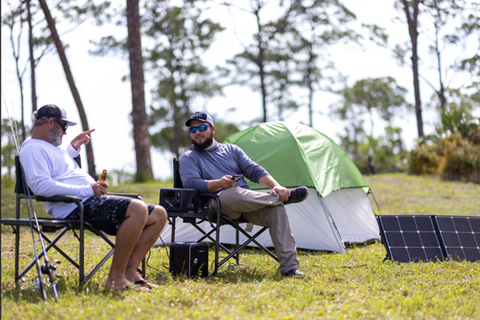
Quels appareils pouvez-vous alimenter avec de l'énergie solaire portable pour votre retraite en pleine nature ?
Les aventures en pleine nature comportent des risques. Il est donc essentiel d'être bien préparé aux conditions imprévisibles que vous pourriez rencontrer. Selon la gravité des circonstances, disposer du matériel adéquat est primordial.
Pour vous aider, nous avons dressé une liste du matériel de camping essentiel qui peut être alimenté par un générateur solaire portable.
1. Lampe torche
Un feu de camp est un élément essentiel de toute escapade en pleine nature, mais son utilité reste limitée. Il peut s'éteindre sous la pluie ou par grand vent, et comme il ne peut être allumé qu'à un seul endroit, il vous sera inutilisable si vous devez vous déplacer. C'est pourquoi nous vous recommandons vivement d'investir dans une lanterne de camping de qualité pour vos séjours en plein air. Non seulement elle garantira votre sécurité, mais vous pourrez aussi la recharger facilement grâce à votre batterie externe.
2. Briquet rechargeable
Avec un briquet rechargeable, vous avez la garantie d'une flamme constante qui ne s'éteint jamais. Contrairement aux briquets traditionnels fonctionnant au kérosène ou au butane, un briquet alimenté par USB suffit à produire une étincelle. Une fois la batterie complètement chargée, la plupart des briquets rechargeables permettent environ 150 à 200 allumages.
3. Douche portable
Camper en pleine nature offre des expériences inoubliables. Cependant, des problèmes d'hygiène peuvent survenir, surtout si vous partagez votre emplacement avec plusieurs personnes. En l'absence de douches sur le terrain de camping, une douche portable s'avère très pratique pour rester propre et frais.
Vous pouvez utiliser un appareil de douche portable avec batteries rechargeables, que vous pouvez connecter facilement à votre système d'énergie solaire portable via un port USB. Ainsi, vous pouvez recharger l'appareil de douche grâce à l'énergie solaire et bénéficier d'une alimentation continue sans avoir recours au réseau électrique traditionnel.
4. Bouilloire électrique
L'eau est essentielle à la survie en milieu sauvage. Cependant, dépendre des sources d'eau naturelles peut s'avérer risqué en raison du risque de contamination par des bactéries nocives. Bien que faire bouillir l'eau soit la méthode la plus simple pour garantir sa potabilité, allumer un feu n'est pas toujours possible.
De plus, vous aurez peut-être envie de boissons chaudes pour vous réchauffer lors de vos excursions en plein air. Dans ce cas, l'idéal est d'utiliser une bouilloire électrique portable que vous pouvez facilement alimenter grâce à un système d'énergie solaire portable.
5. Mini ventilateur
Lorsque le soleil brille intensément, la chaleur peut devenir étouffante sur votre emplacement de camping et dans votre tente. Heureusement, vous pouvez atténuer cet inconfort grâce à un mini-ventilateur alimenté par votre système d'énergie solaire de camping. Ce dernier vous permet de rafraîchir efficacement votre espace de camping, améliorant ainsi votre confort et votre bien-être même par temps chaud.
6. Réchaud de camping
Bien que la cuisson au feu de bois soit possible, elle s'avère souvent contraignante. De plus, les feux de camp sont interdits dans de nombreuses régions en raison du risque constant d'incendies de forêt. Il est donc essentiel d'emporter un réchaud de camping lors de vos séjours en plein air.
L'excellente nouvelle, c'est que vous pouvez facilement utiliser l'énergie solaire de votre station solaire portable pour alimenter votre réchaud et préparer vos repas. Vous pouvez ainsi profiter de l'énergie solaire pour cuisiner tout en savourant vos repas en plein air.

Comment choisir un système d'énergie solaire portable pour votre refuge en pleine nature
Lors du choix d'un système d'énergie solaire pour vos activités de plein air, plusieurs facteurs doivent être pris en compte afin de sélectionner celui qui correspond le mieux à vos besoins. Voici quelques points clés à considérer :
1. Puissance de sortie
La puissance de sortie est un facteur crucial à prendre en compte lors du choix d'un système d'énergie solaire pour les activités de plein air. Pour déterminer vos besoins en énergie, vous devez recenser les appareils que vous prévoyez d'alimenter grâce à ce système.
Commencez par dresser la liste des appareils que vous utiliserez lors de vos excursions en plein air. Notez ensuite la puissance (en watts) ou la consommation électrique de chaque appareil. Vous trouverez cette information sur l'appareil lui-même ou dans son manuel d'utilisation. Il est important de prendre en compte la consommation électrique continue ainsi que les pics de consommation lors du démarrage ou du fonctionnement à pleine capacité.
Additionnez la puissance (en watts) de tous les appareils que vous prévoyez d'utiliser simultanément afin de déterminer la puissance minimale requise par votre système d'énergie solaire. Il est conseillé de prévoir une marge de sécurité pour compenser les fluctuations de courant et permettre l'ajout d'appareils ultérieurement.
2. Portabilité
Un système d'énergie solaire portable doit être conçu pour être facilement transportable. Privilégiez les systèmes compacts et légers afin de pouvoir les ranger et les transporter aisément avec votre équipement de camping. Tenez compte de la taille, du poids et de l'encombrement du système : il doit pouvoir se glisser facilement dans votre sac à dos ou votre véhicule sans être trop volumineux ni trop lourd.
En plus d'être compact, le système doit être facile à monter et à démonter sur différents types de campings ou dans des zones isolées. Privilégiez les systèmes à montage rapide et simple, avec des instructions claires et un nombre réduit de pièces. Idéalement, le montage devrait se faire sans outil et en quelques minutes.
3. Capacité de la batterie
La capacité de la batterie représente la quantité d'énergie qu'elle peut stocker et fournir à vos appareils. Plus sa capacité est élevée, plus elle stocke d'énergie, ce qui permet une autonomie prolongée même en l'absence de lumière naturelle.
Pour évaluer la capacité d'une batterie, il est essentiel de prendre en compte vos besoins en énergie et la durée d'utilisation. Calculez la consommation énergétique totale des appareils que vous prévoyez d'alimenter et estimez la durée pendant laquelle vous devrez compter sur l'énergie stockée. Cela vous permettra de déterminer la capacité de batterie adaptée à vos activités de plein air.
Disposer d'un système d'énergie solaire doté d'une batterie de grande capacité vous assure une source d'énergie fiable même en l'absence d'ensoleillement direct. Vous pouvez ainsi recharger et alimenter vos appareils par temps nuageux, la nuit ou lorsque vous vous trouvez dans des zones ombragées.
4. Compatibilité
La compatibilité est un facteur essentiel à prendre en compte lors du choix d'un système d'énergie solaire pour vos aventures en plein air. Il est important de s'assurer que le système choisi est compatible avec les appareils que vous souhaitez alimenter, afin de garantir une intégration optimale et un fonctionnement efficace.
Commencez par identifier les appareils que vous prévoyez d'utiliser avec le système d'énergie solaire. Tenez compte de leurs besoins en énergie, de leurs méthodes de charge et du type de connecteurs utilisés. Parmi les appareils courants, on trouve les smartphones, les tablettes, les ordinateurs portables, les appareils photo, les enceintes portables, les lampes de camping, les ventilateurs, voire les réchauds ou réfrigérateurs de camping.
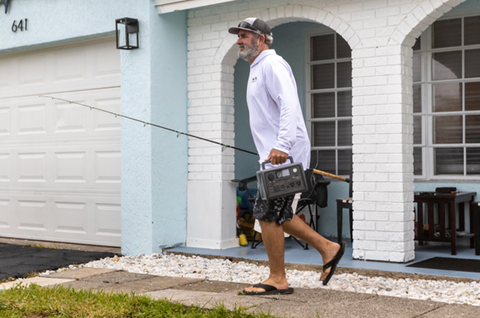
Conclusion
Les systèmes d'énergie solaire portables offrent une solution fiable et durable pour l'alimentation électrique hors réseau dans les endroits isolés lors de vos séjours en pleine nature. Ces systèmes vous permettent d'explorer et d'apprécier la beauté de la nature en toute liberté, sans renoncer au confort moderne ni compromettre votre sécurité.














